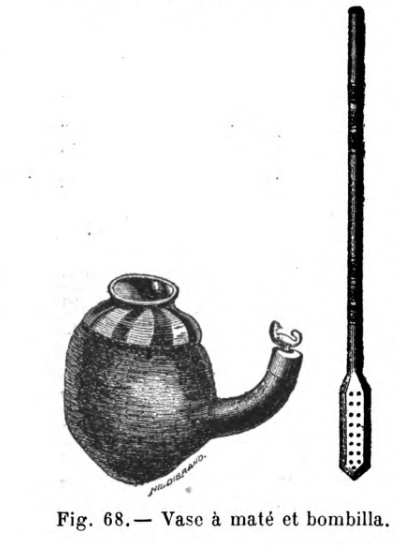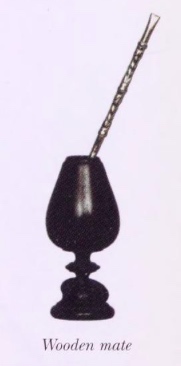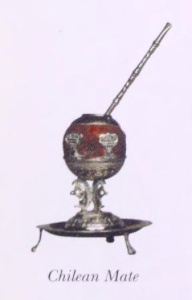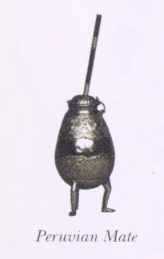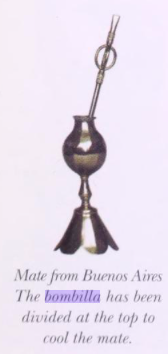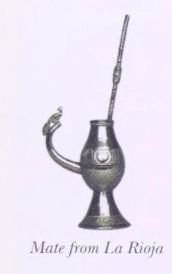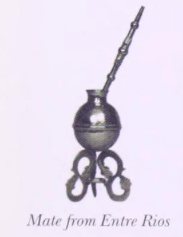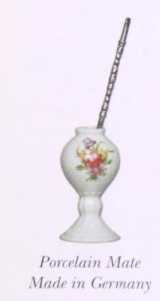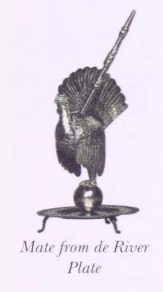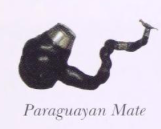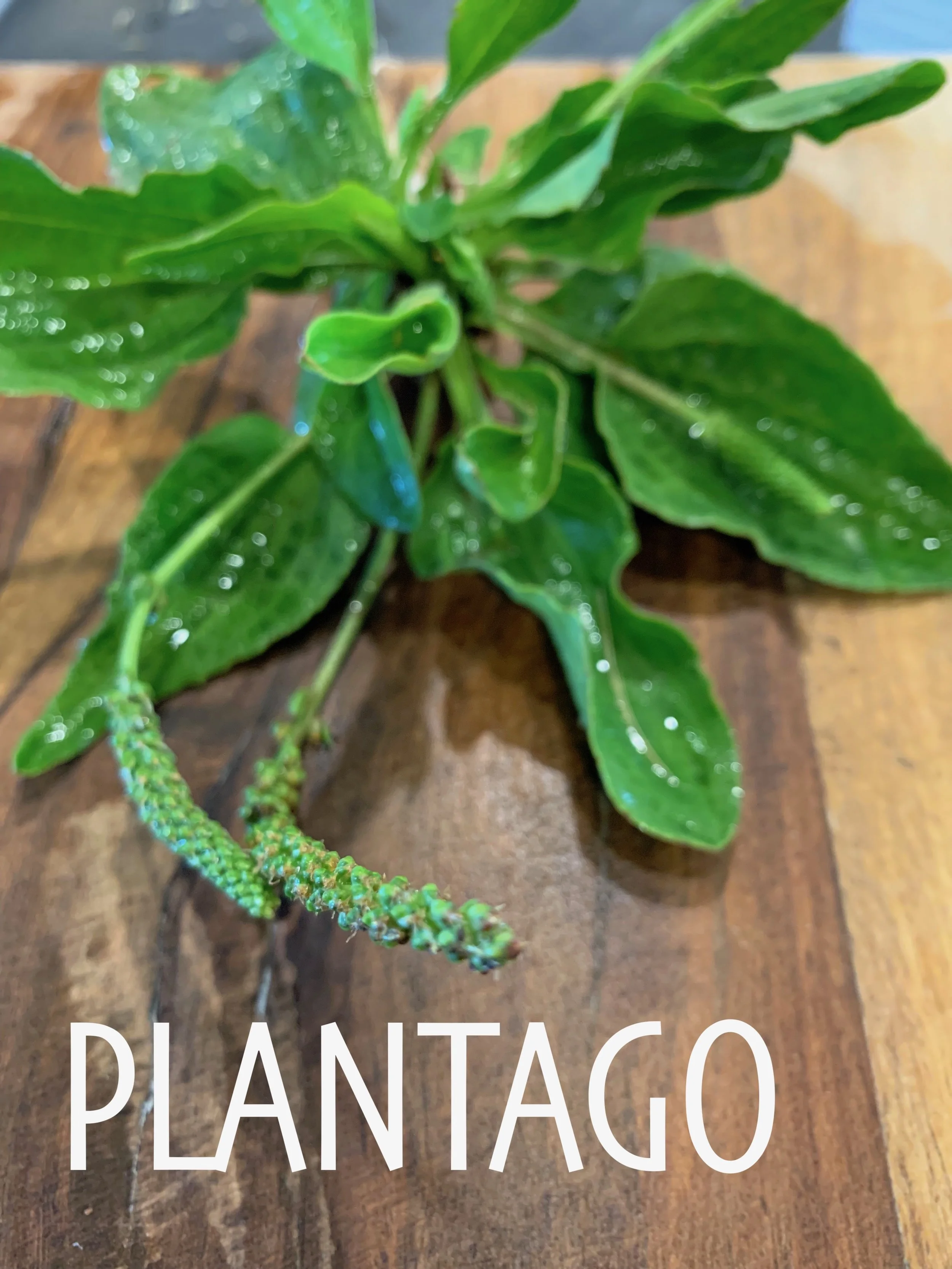Yerba Maté: The Holly for All Seasons
Ilex paraguariensis
Image, by Dick Culbert, retrieved under Creative Commons licensure from here.
Ilex paraguariensis, a South American holly tree responsible for providing humankind with the caffeinated beverage called Yerba Maté, has been a celebrated infusion in South America since a time immemorial. The leaves and unopened buds are steeped in tradition, sweetened with affection, and served in friendship. In the wild, Ilex paraguariensis was planted along rivers by the Toucan [9].
Today, Yerba Maté can be found in your local café or grocery store.
Welcome to the world of Yerba Maté .
May it bring you simple joy.
Image retrieved under Creative Commons licensure from here.
Family — Aquifoliaceae
Family Characteristics — Aquifoliaceae family members tend to be dioecious (having separate male and female plants) evergreen trees and shrubs that have inconspicuous green-to-white flowers, glossy leaves, and bright red berries typical of a holly [4].
Aliases — Paraguayan tea, South American Holly, tea of Bartholomew, tea of the Jesuits, tea of the missions; herva matte, caa [meaning: the plant], caa guazu [meaning: big/splendid plant] (BRAZIL); congonha, erva maté (PORTUGUESE); kongóñ (KAINGANGUE); yerba maté [meaning: yerba = herb; maté = gourd] (Spanish)
Binomial Etymology—Ilex is a Latin term referring to “the Holm oak [2].” Holm was a Middle English term referencing holly [3].
Description
A tropical evergreen holly tree that stands 4-8 m (13-26 feet) tall [5].
Habitat
Ilex paraguariensis is fond of riparian areas of South America [5].
Creative Commons image retrieved from: Jumelle, H. (1901). Les cultures coloniales, plantes industrielles & médicinales. Paris: J.B. Baillière et Fils.
You Are Preparing Yerba Maté Incorrectly!
For every one of the myriad ways you can prepare yerba maté, you’ll find someone shaking the shaming stick at your degenerate creation. This is a safe space, Traveller. Here you may be free from the wagging finger of judgment and doom. Nobody is preening themselves for their obviously superior refinement and class (see: ironic joke), however, something interesting popped up in the record.
In 18th century Paraguay, it was NOT customary to steep yerba maté in hot water!
In fact, in the early 1700s, the hot preparation was thought to produce indigestion, flatulence, sleeplessness, laziness, and heart irritation [5]. YIKES!
Here is how yerba maté was traditionally prepared in early 18th Century Paraguay:
In 1710, Father Pedro de Montenegro related in his Materia Medica Misionera, that native Paraguayans placed two teaspoons of pulverized yerba into their maté gourd and steeped it for three minutes in COOL water with a little salt. The salt was thought to aid in “condensing” the yerba to prevent it from harming the intestines. Father Montenegro— allowing that hot yerba maté was sometimes fixed in cool weather— regarded the counter-traditional practice as a “mistake” [5].
After the cool and lightly salted yerba had been repeatedly steeped in changes of water until it lost its flavor, the remaining herbage was heated and placed on the head, temples, and stomach to combat the headache accompanying heat exhaustion. This says something interesting; apparently, Paraguayans originally considered hot yerba better suited for outside than inside the body. [5].
Having just tried this cold preparation for the first time moments ago, I do not think I will go back to the hot stuff. It is smooth and refreshing like some kind of sugar-less herbal Gatorade (Yerbade, anyone?). The yerba readily infuses with cool water almost instantly. A whisper of salt invites the herb’s best flavor characters to the forefront, and leaves behind those tastes that some consider “acquired,” unwelcome, or bitter. The fact that this preparation would serve to replace electrolytes was probably no accident either; yerba maté was used to treat heat fatique [5].
It could be possible that the commingling of customs and introduction of traditional tea chauffeured the hot preparation into vogue, but that kind of speculation is irresponsible. Regardless, my brain was tap-dancing over the Montenegro method and I wanted to share.
Muchos gracias, Padre!
Salud!
Image, captured by Akram Dawra, retrieved under Creative Commons licensure from here.
Alternate Preparations of Yerba Maté
I mentioned above that there is really no “incorrect” way to serve yerba maté. Here is a list of preparations I’ve found on record. Choose one of these styles as the only legitimate preparation and rudely disavow the others at your leisure.
Please share your favorite preparation in the comments below and I may add it to this list.
Steeped in cool water for three minutes with a little salt (Montenegro).
Steeped in cool water (tereré).
Steeped in hot water with powdered sugar, and a dash of lemon/orange juice.
Yerba maté without sugar (maté amargo ) [7].
Steeped in hot water with ground-up peanuts, palm nuts, and/or honey.
Drink derived from the wild plant (herva brava).
Yerba prepared with boiling water like tea (maté cocido)
I prepare mine in cool water with a little salt in a French press. I keep filling the French press until the mate stops making the water frothy (The Only Legitimate Method).
Traditional Gathering of Yerba Maté by Yerbateros
In Brazil and Paraguay, the wild collection of yerba mate was carried out by teams of yerba mate foragers known as yerbateros. At the beginning of May, when relatively new leaf growth was generally coupled with dry weather conditions, a team of yerbateros under the charge of an experienced foreman, would search for a suitable stand of Ilex paraguariensis. Once a sizable stand was located, the yerbateros would set up camp using banana and palm leaves [1].
Creative Commons image sourced from an American Union. (1916). Yerba mate: the tea of South America ... Washington: Govt. Print. Off.
While a team constructed camp, another group was dedicated to the construction of a tatacua (a square of land used for the initial scorching of the gathered leaves and twigs). To prepare the tatacua, a square approximately 1.8 m X 1.8 m (6 X 6 foot) of ground was pounded flat and compact by heavy wooden mallets. Stakes were hammered into the four corners of the tatacua and firewood was placed on the newly hard and compacted Earth. In addition to the construction of camp and the tatacua, a structure known as a barbecua was erected (See Below) [1].
Creative Commons image sourced from an American Union. (1916). Yerba mate: the tea of South America ... Washington: Govt. Print. Off.
The barbacua was a building consisting of wooden tresses and a high roof under which a fire could be built for the purpose of curing the leaves. When all necessary structures were in place, the yerbateros would visit the wild stands of Ilex paraguariensis [1].
The yerbatero would climb the tree using a leather strap tied to both ankles called a manea, and chop off all of the smaller branches bearing unopened flower buds and leaves of middling maturity. The leaf-bearing branches were tied to the yerbateros using a leather strap (known as an alza) that passed across their foreheads. The alza served to secure the branches upon their shoulders and backs [1].
Creative Commons image retrieved from Koebel, W. H. (William Henry). (1917). Paraguay. New York: C. Scribner's sons.
The yerbateros brought the branches back to the tataua where the leaves were given a first scorching and stripped from off of the branches. The falling leaves were collected in a net made of hide and taken to the barbacua [1].
All of the leaves were piled on to the “roof” of the barbacua, and a 24 hour fire was tended beneath. The yerbateros carefully prevented the leaves from catching fire using long poles throughout the night [1].
After curing in the barbacua, the leaves where pulverized (a process called cancheo [9]); the powdered yerba was packed into hide sacks weighing up to 90 kg (approximately 200 lbs) each and transported via mule to the nearest port or trade center [1].
Creative Commons image retrieved from Pan American Union. (1916). Yerba mate: the tea of South America ... Washington: Govt. Print. Off.
Etymology of the Term: Yerba Maté
The native inhabitants of Paraguay (la indígenas guaraníes, or, the Guarani) called Ilex paraguariensis, caá, which simply meant “weed” [8]. The Spanish equivalent for the term, yerba, was therefore used [8]. The word, maté, is a Guarani term referencing the gourd which contains the drink. So, the term Yerba Maté is a name composed of two languages.
Communal Use in South America
A dried out and often illustriously decorated gourd called a maté was used to both steep and contain the beverage. A traditional straw with a perforated bulb on the end, called a bombilla, was used to strain the liquid as it was sipped. By all accounts, yerba maté drinking was a communal and highly social practice [1] [5] [6].
To use your own dedicated drinking vessel was considered crude and impolite; but to refuse a sip from the communal bombilla was considered to be a belligerent sign of disrespect [1] [5] [6] [9]. It was not only considered rude, but an insult to the hospitality of the host country greeting you with open arms [6]. Don’t try wiping the bombilla tip before use either, as this is also an insult [9].
Please let us know about your country or enclave’s contemporary ritual involving social yerba mate use in the comments below.
The Bombilla
This gentleman does a great job of explaining the pros and cons of different bombilla styles. His opinions are born of experience.
Gallery of Traditional Gourds and Bombillas
Images sourced under Creative Commons licensure from De le Comte, H., & Gloria, M. (2001). El mate. Buenos Aires: Maizal Ed.
Ethnopharmacology of Yerba Maté (Medicinal Uses)
Medicinal Uses in Argentina
Among Argentine gauchos, yerba maté was. thought to suppress hunger [6].
Medicinal Uses in Paraguay
In 18th century Paraguay, the green pulverized leaves were used as a poultice to staunch bleeding (antihemorrhagic) and to calm the nerves of someone bearing such a wound. It was used to allay the effects of smoking or inhaling neurotoxic metals during work. It was said to relieve pain, gout, typhoid fever, induce sweating (diaphoretic), and suppress the appetite. The leaves, moistened and chewed, were known to alleviate toothaches. It was known roundly as a stimulant in Paraguay as well as it was most everywhere else [5].
General Ethnobotany of Yerba Maté (Additional Uses)
The fermented leaves of Yerba Maté were pressed to produce a blank ink and dye by South American missionaries [9].
Yerba Maté in Literature
“God has done a great charity in bestowing this valuable medicine on the poor country of Paraguay, it is more suitable for the climate and natives than chocolate and wine…”
Padre de la Montenegro, Materia Medica Misionera (1710)
Music Inspired By Yerba Maté
Researching the ethnobotany of plants comes with the added benefit of finding incredible music. Discovering the song, Yerba Maté, by Andrés Hernández is one such occasion where researching plants has resulted in an absolutely transcendent event.. If you are in the mood to be blown away, put on a pair of headphones, play the song below, and prepare for takeoff. Absolutely FANTASTIC!
Yerba Mate Nutrition
Yerba Mate infusions are known to contain vitamins A, C, and B as well as potassium, calcium, and iron [10].
Boycott of “Maté Factor” Brand of Yerba Maté
While researching this article, I had purchased a bag of Yerba Maté branded “Maté Factor” from a local Natural Grocers (Pueblo, Colorado). I looked into the company and found some pretty disturbing information. If you patronize Mate Factor Yerba Maté (as well as their restaurant called The Yellow Deli), you are financially supporting a fast growing white supremacist, and deeply homophobic religious cult called 12 Tribes. I have received numerous emails and instagram messages from 12 Tribes trying to keep me from sharing this.
The Natural Grocers Pueblo location, even after being presented with the below information, refused to take Maté Factor off the shelves. They did, however, refund me.
I dream of this webspace becoming a meeting ground where different cultures learn from one another through plants. Differences make life interesting and sometimes teach us a great deal about ourselves. Intolerance, racism, bigotry, homophobia (etc) have no place here.
I am no longer interested in engaging with 12 Tribes. Their “nice” facade draws nice people in; they defend themselves with classic tokenism (“we have gay/black/Jewish friends” so on). They encourage people to surrender their worldly possessions to them, cut ties with their families, and preach intolerance in no uncertain terms. Simply enter the word “homosexual” into the Maté Factor website and you will find out pretty quick.
Links to Information about the Cult:
CLICK ON ANY OF THESE LINKS.
Into Darkness: Inside an American White Supremacist Cult (Southern Poverty Law Center)
What It Is Like in the Twelve Tribes Cult (Women’s Weekly)
In the Cult’s Own Words
On interracial marriage and multiculturalism:
“We try to avoid interracial marriages because we like the races of man the way God made them.”
“Let’s face it. It is just not reasonable to expect people to live contentedly alongside of others who are culturally and racially different. This is unnatural, and sometimes forces people to go against what they instinctively know in their conscience.”
On homosexuality:
“This is what all who are in favor of civil rights for homosexuals are standing up for — their unhindered freedom to continue to seduce the children of America. Their condemnation is just.”
“Is it coincidence that so many homosexuals are infected with AIDS?”
Pullupyourplants.com is no longer interested in engaging with 12 Tribes members online. Intolerance is not tolerated here, and I will be erasing any 12 Tribes propaganda in the comments.
To my Patreon supporters, I am eternally grateful! Thank you for your continued support and active encouragement through the trials of life.
If you would like to support this research, be sure to visit: https://www.patreon.com/pullupyourplants
Please comment with any corrections, observations, perspectives, or stories regarding Yerba Maté below. All of references are available upon request by emailing me here: pullupyourplants @ gmail.com










